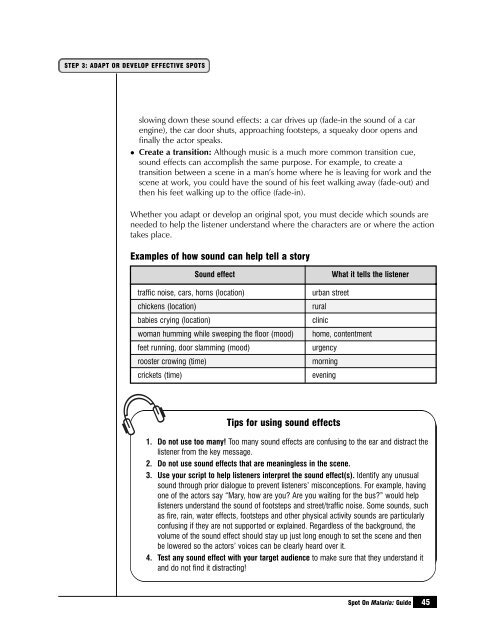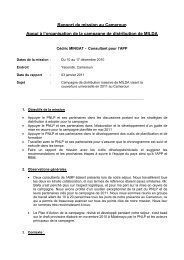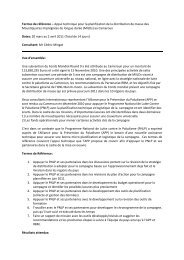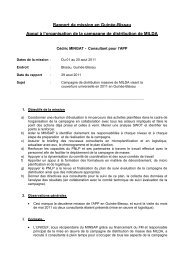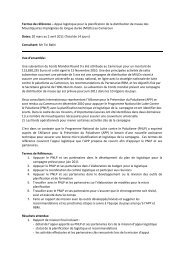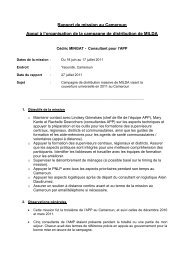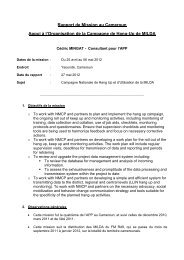Spots - Roll Back Malaria
Spots - Roll Back Malaria
Spots - Roll Back Malaria
- No tags were found...
You also want an ePaper? Increase the reach of your titles
YUMPU automatically turns print PDFs into web optimized ePapers that Google loves.
STEP 3: ADAPT OR DEVELOP EFFECTIVE SPOTSslowing down these sound effects: a car drives up (fade-in the sound of a carengine), the car door shuts, approaching footsteps, a squeaky door opens andfinally the actor speaks.• Create a transition: Although music is a much more common transition cue,sound effects can accomplish the same purpose. For example, to create atransition between a scene in a man’s home where he is leaving for work and thescene at work, you could have the sound of his feet walking away (fade-out) andthen his feet walking up to the office (fade-in).Whether you adapt or develop an original spot, you must decide which sounds areneeded to help the listener understand where the characters are or where the actiontakes place.Examples of how sound can help tell a storySound effecttraffic noise, cars, horns (location)chickens (location)babies crying (location)woman humming while sweeping the floor (mood)feet running, door slamming (mood)rooster crowing (time)crickets (time)What it tells the listenerurban streetruralclinichome, contentmenturgencymorningeveningTips for using sound effects1. Do not use too many! Too many sound effects are confusing to the ear and distract thelistener from the key message.2. Do not use sound effects that are meaningless in the scene.3. Use your script to help listeners interpret the sound effect(s). Identify any unusualsound through prior dialogue to prevent listeners’ misconceptions. For example, havingone of the actors say “Mary, how are you? Are you waiting for the bus?” would helplisteners understand the sound of footsteps and street/traffic noise. Some sounds, suchas fire, rain, water effects, footsteps and other physical activity sounds are particularlyconfusing if they are not supported or explained. Regardless of the background, thevolume of the sound effect should stay up just long enough to set the scene and thenbe lowered so the actors’ voices can be clearly heard over it.4. Test any sound effect with your target audience to make sure that they understand itand do not find it distracting!Spot On <strong>Malaria</strong>: Guide45


